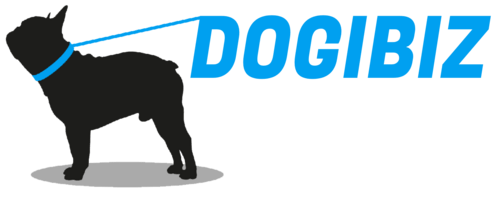After your dog’s spay surgery, their safety and comfort are top priorities. By following the right aftercare instructions, you ensure a quick and easy recovery for your pet.
Key Takeaways:
- Limit your dog’s movement for 7 to 14 days to help them heal well.
- Keep the operation site dry and no baths or swimming for a week after surgery.
- Check the incision each day for any swelling, redness, or odd discharge.
- To stop your dog from biting or licking the wound, use an Elizabethan collar.
- Keep your dog’s food the same and fresh water available all the time.
Restricted Activity and Supervision
After spay surgery, it’s vital to limit your pet’s movement for 7 to 14 days. This helps them heal well and avoid problems. Keeping your pet still after spay is key for their health.
Avoid rough play and any high-energy games during recovery. Running or jumping can harm the surgery area and slow healing. Ensure your pet is watched, and keep them away from places where they might be too active.
To supervise your pet after surgery, use a small room or crate. Being in a small space keeps them from overexerting themselves. If your pet is little, carry them on stairs to control their movement.
When it’s time for the bathroom, walk your pet on a leash. This gives you power over how much they move. It also stops them from playing rough while they’re outside.
Here’s a list of what activities to avoid after your pet’s spay surgery:
| Restricted Activities | Description |
|---|---|
| No running or jumping | Avoiding activities that might hurt the surgery spot is crucial. |
| No rough play | Keep away from games that could hurt the pet. |
| Supervision | Always keep an eye on the pet to make sure they follow the activity rules. |
| Leashed bathroom breaks | Walking the pet on a leash prevents them from being too active. |
Incision Care and Monitoring
After your pet’s spay surgery, it’s vital to look after the incision. This helps your pet heal well and avoids problems. Stick to these tips for a smooth recovery.
Caring for the Incision
Keeping the incision clean and dry is crucial. Don’t bathe your pet or put any ointments on the site for 10 days. Moisture could lead to infections, so dryness is key.
Check the incision site twice per day. Watch for redness, swelling, or if it looks wet. These could mean trouble. If you see anything unusual, call your vet right away.
Signs of Complications
Watch for complications during your pet’s recovery. Some swelling and redness are okay. But don’t ignore these signs:
- Persistent or worsening redness
- Excessive swelling
- Discharge that’s yellow, green, or smells
- Pale gums
- Feeling down
- Eating less
- Trouble breathing
Seeing any of these signs means quick vet attention is a must. Prompt care from the vet can better your pet’s recovery.
Always stick to what your vet recommends for care and watching. Your pet’s unique recovery needs are best understood by your vet.
Taking good care of the incision site is key to your pet’s recovery. Being diligent and involved can help your pet heal and avoid complications.
Preventing Licking and Chewing
Keeping your pet from licking its incision stops infection and issues. An Elizabethan collar is a great tool to prevent this. It’s also called a cone or a “cone of shame.” This cone keeps the pet from the wound, making sure it heals well.
The collar, though helpful, can make your pet feel bad. So, you should let your pet get used to it slowly. Put it on for a bit at first. Over time, make them wear it longer. Be sure to reward them for wearing it. This makes wearing the collar a good thing for them.
Along with the collar, giving your pet other fun things to do helps too. Use toys or puzzles that make your pet think. This keeps them from getting bored. Play with them or give treats, which also helps in not licking their wound. This way, they’re happy and heal well.
“The Elizabethan collar is a simple yet effective tool for preventing pets from licking their incision sites. By providing distractions and engaging them with stimulating activities, we can ensure a smooth and comfortable recovery for our furry companions.” – Dr. Emily Johnson, Veterinarian
If your pet keeps licking the wound, get help from a vet. They might suggest bitter sprays or wrapping the area. Quick action can avoid problems and help your pet get better soon.
Diet and Hydration
Pets might eat less after spay surgery because of the anesthesia and pain meds. This should get better within a day. Offer them a small meal at first. Then, go back to their normal feeding times.
Always leave fresh water out for your pet as they recover. Keeping them hydrated is key for a good recovery. Also, remember to clean their water dish often to keep it germ-free.
It’s best to avoid giving your pet any special treats or food from your plate. Stick to what they normally eat. This helps their tummy feel good and they heal quicker. No junk food for them.
Pro Tip: Watch for strange signs after surgery, like being really tired or stomach troubles. If you see this, call your vet for advice. They know how to help your pet get better.
Feeding your pet well and offering lots of clean water is vital for a fast recovery. Good food and water help your pet heal and stay healthy.
| Post-Spay Diet Tips | Benefits |
|---|---|
| Stick to their regular diet | Prevents digestive upset |
| Provide smaller, half-size meals | Eases the transition after surgery |
| Ensure fresh water is always available | Promotes hydration and healing |
| Avoid giving junk food or table scraps | Prevents stomach upset and delays healing |
Rest and Comfortable Recovery Space
After surgery, rest helps pets recover smoothly. It’s vital to set up a quiet, safe area at home. This spot should block noise and keep them away from too much movement.
Adding soft bedding can make your pet more comfortable. It reduces pressure and makes them cozy. Remember to isolate them from other pets and kids to lower stress.
If your pet is a cat, let them leave the carrier when they want. This can ease their worries about the new environment. They will feel calmer if they explore by themselves.
Watch how your pet acts as they recover. Look for signs of unease. Changing their recovery spot or offering more care might help. Creating a peaceful area ensures they heal well.
| Benefits of Providing Rest and a Comfortable Recovery Space |
|---|
| 1. Allows the pet to recuperate without unnecessary stress. |
| 2. Minimizes the risk of interfering with the surgical site. |
| 3. Promotes a calm environment for faster healing. |
| 4. Provides an opportunity for rest and relaxation. |
Post-Spay Behavioral Changes

Pets may act differently after getting spayed. The biggest changes happen in the first 24 to 48 hours. It’s key for owners to understand these changes. This way, they can support their pets well.
A drop in food interest is common after surgery. Anesthesia and pain meds are often the cause. These can lead to tummy troubles and sleepiness. A quiet, relaxing space can help pets eat again. This reduces their stress-induced food worries.
Drowsiness is often seen in pets post-spay. Anesthesia and pain killers make them sleepy. Rest is vital for their recovery. A soft bed in a quiet spot is perfect. Watch for any big changes in how they act.
“It’s important for pet owners to be aware of these changes and understand their underlying causes in order to provide appropriate care and reassurance.”
Although changes, like eating less and being tired, are expected, watch closely. If these last longer than a few days, talking to a vet is wise. They can make sure there’s no serious issue.
Creating a peaceful recovery zone is crucial. Use kind words and plenty of pats. These show your pet love and help them bounce back. Be patient and caring. Your understanding makes a big difference in their healing.
Common Behavioral Changes After Spay Surgery
| Behavioral Change | Cause | Duration |
|---|---|---|
| Decreased Appetite | Effects of anesthesia and pain medication | Temporary, usually within the first 24 to 48 hours |
| Drowsiness | Effects of anesthesia and pain medication | Temporary, usually within the first 24 to 48 hours |
Conclusion
Post-spay care is key for a smooth recovery for your pet. It involves following your vet’s advice closely. This can lower the chance of issues and help your pet heal well. Key steps include rest, limited activity, watching the incision, and keeping your pet from licking it.
It’s crucial to stick to your vet’s post-surgery advice. They know best and their guidance is vital. If you have any questions, don’t hesitate to reach out. Working closely with your vet is the best way to ensure your pet’s recovery goes smoothly.
Being committed to caring for your pet after surgery is vital. Your love and support help them undergo a less stressful recovery. Following the right steps is crucial for their well-being. It’s your active support that makes a big difference in their journey to full health.
FAQ
How long should I restrict my dog’s activity after spay surgery?
Your dog should take it easy for 7 to 14 days after the operation. This time is crucial for healing. No running, jumping, or hard play during this period.
Can I bathe my dog after spaying?
It’s vital to keep the incision dry for a week after surgery. This means no bathing. Keeping it dry helps prevent infections and promotes healing.
Should I remove the stitches from my dog’s incision?
The stitches from spay surgery are dissolvable. There’s no need to take them out. They will go away on their own as the wound heals.
How often should I monitor my dog’s incision site?
Check the incision spot twice a day. Look for redness, swelling, or any unusual discharges. This way, you can spot problems early and act fast.
How can I prevent my dog from licking the incision site?
Use an Elizabethan collar if licking is a problem. They can’t reach the incision with this on. You can also distract them with treats or toys.
What should I feed my dog after spay surgery?
Your dog might not eat as much at first. Start with small meals and then back to normal. Keep their food the same and avoid junk or table scraps.
How can I create a comfortable recovery space for my dog?
Set up a quiet, safe area for your dog’s recovery. Lots of soft bedding is good. Keep them away from lively situations. This promotes a calm and comfy recovery.
What are common behavioral changes after spay surgery?
Your dog might eat and sleep more right after surgery. This is normal for a day or two. If it lasts longer, contact the vet to be safe.
Why is post-spay care important?
Taking care after spaying is critical for your dog’s health. It avoids problems and supports healing. It’s your part in making sure your dog bounces back well.









Leave a Reply